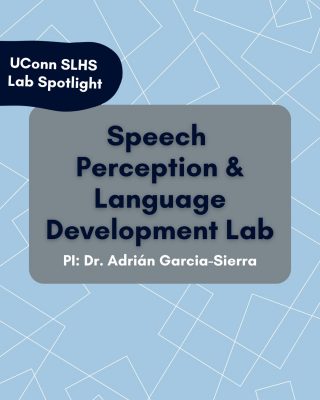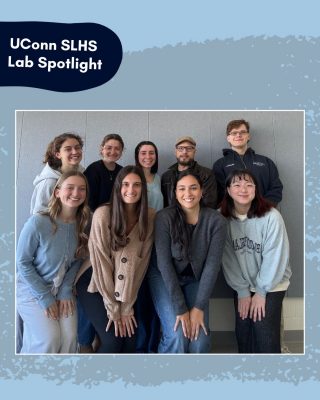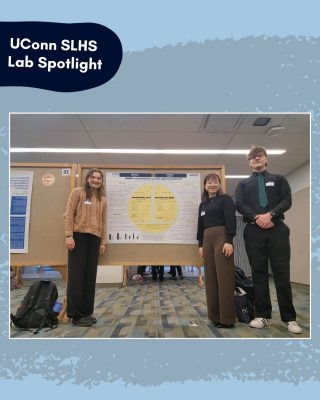Next up in our UConn SLHS Lab spotlight series is the Speech Perception and Language Development Lab!
The Speech Perception and Language Development Lab (SPLD; PI Dr. Garcia-Sierra) focuses on bilingual language processing, neural mechanisms of speech perception and production, and cross-linguistic influence—especially using ERP methods to study how bilinguals process phonetic and syntactic structures.
In the SPLD lab, they are currently studying how bilingual brains manage not just two languages, but entire systems of meaning, sound, and structure. Some of their projects are highlighted below:
- In the PRISM project, they are exploring whether solving math problems can actually change how bilinguals interpret sentences. The idea is that the way we structure ideas in math might influence how we process grammar in language – especially for Spanish-English bilinguals who switch between different word orders and grammar rules. In fact, in many cases, bilingual brains can blend grammar and pronunciation rules from both languages. For example, Spanish-English bilinguals may sometimes apply English word order when speaking Spanish – a reflection of how their two language systems interact.
- The SNAP project suggests that bilinguals who continue to use Spanish pronunciation patterns may be more attuned to grammar differences, highlighting how sound and structure can work together to support bilingual language use. This connection starts early.
- The “Double Dipping” project shows that babies in bilingual homes naturally learn sounds from both languages, thanks to the rich input they receive from caregivers who move fluidly between languages’ structures and sounds. Rather than causing confusion, this kind of input helps shape a flexible, adaptive brain – one that is well-prepared to manage multiple language systems across development. As bilinguals grow, their brains become experts at navigating changing language environments.
- The lab has found that bilinguals can adjust how they hear the exact same speech sounds depending on which language they are hearing – even when the sounds themselves are meaningless (Brain switch project).
- Amazingly, subtle speech cues – like how long a sound lasts or where it is made in the mouth – can signal which language system the brain should use. Right now, they are testing whether the same brain regions that help bilinguals switch between languages are also active when they hear only the sound patterns typical of one language, even when no real words are used (Project Bilingual Brains Adapt).
- Building on this, another study is now looking at what happens when bilinguals hear a completely unfamiliar language like Mandarin. Can their brains still switch gears? Early results suggest yes – the brain tries to adapt using what it knows, showing just how flexible bilingual sound processing can be.
A fun fact about the SPLD lab is that they are all avid fans of the UConn Dairy Bar! They recently took a trip as a lab at the end of last semester to grab ice cream and celebrate their hard work.
You can check out the SPLD lab on Instagram (@spld_lab) and on their website: https://speechlanguage.uconn.edu/


